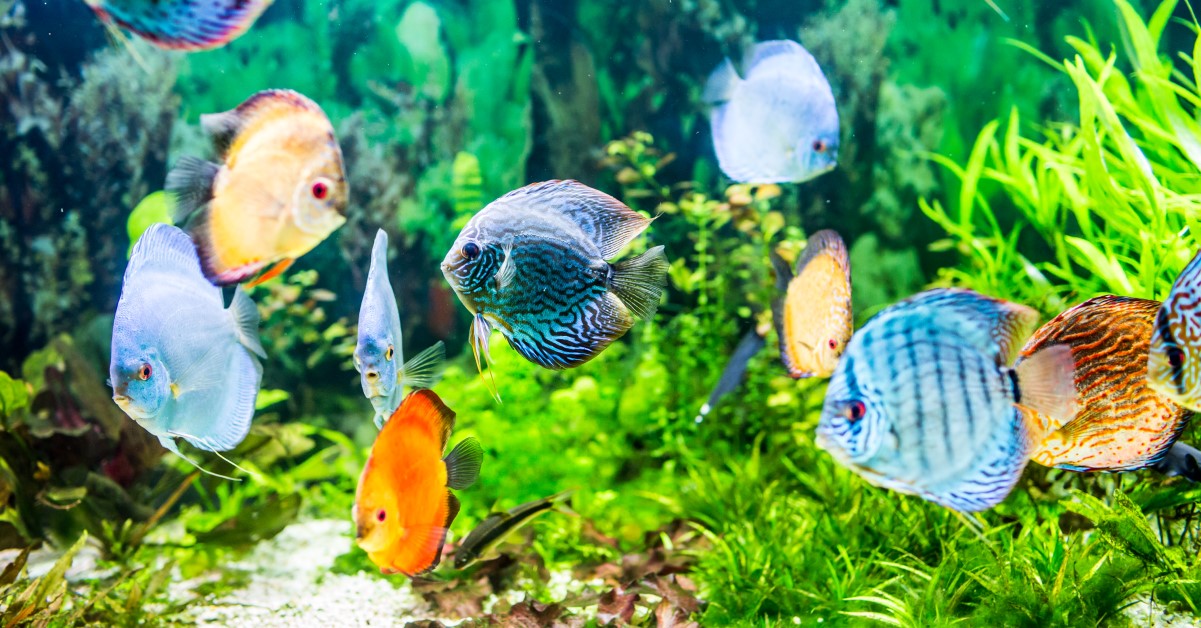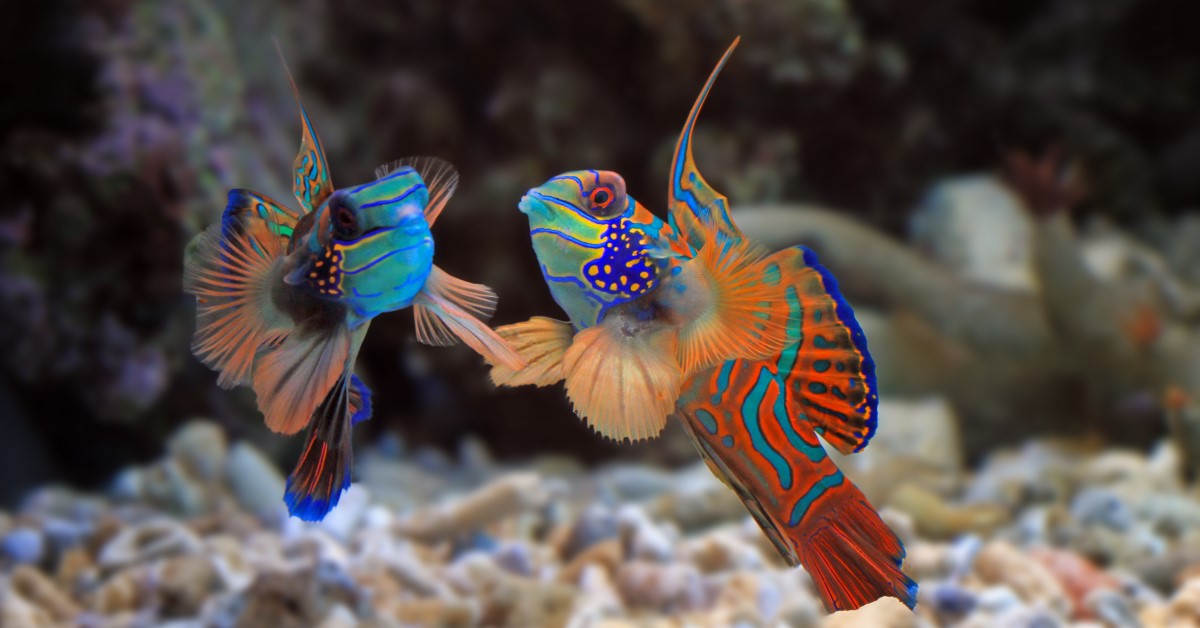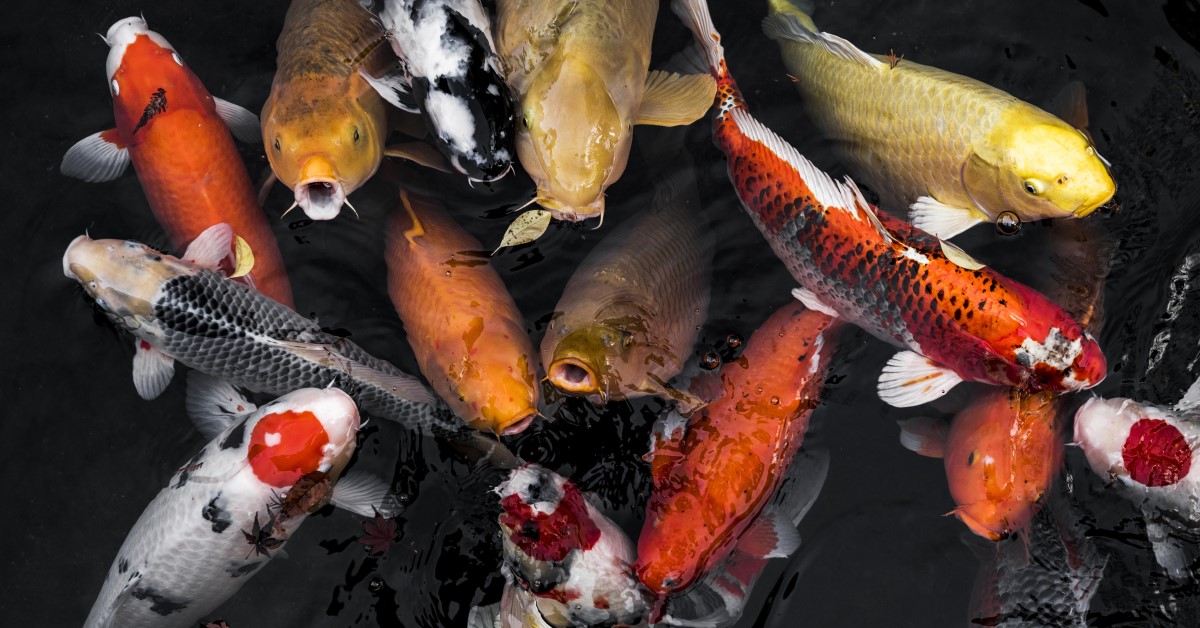Signs Your Fish is Sick and How to Solve It
Understanding what signs to look for in an unhealthy fish can help you better treat your pet.

While fish might seem like low-maintenance pets, they require regular care to prevent illness and disease. Fish can become sick for a wide range of reasons, such as poor water quality, stress, or crowding. In some instances, adding a new fish to the tank will pass on disease to other fish, requiring treatment for an entire tank.
If you suspect that your pet fish might be unhealthy, it’s important to know what signs to look for and how to treat common fish conditions.
Signs that Your Pet Fish Is Sick or Unhealthy
While signs of an unhealthy fish can vary from species to species, certain red flags may indicate that your pet is unwell.
1. Faded Colors
Color fading can be a sign of illness. Certain species of fish, such as betta fish, will often lose their vibrant coloring when they get sick or stressed. Their body will appear pale or washed out compared to their usual vibrancy. They may also exhibit other signs of illness, such as lack of appetite. It’s important to narrow down the cause of the color fading, such as poor water quality, diet, parasites, or incorrect water temperature.
2. White Spots
If your fish has developed white spots, it could be ich. Ichthyophthirius multifiliis, more commonly known as ich or white spot disease, is a common fish parasite. The illness causes white spots all over the body. This common parasitic infection is one of the few types of fish parasites that can be seen with the naked eye. It’s most common in freshwater fish. Treatment for ich can be found at your local pet supply shop and involves dosing the aquarium water with medication.
3. Shredded Fins
Fish that have shredded fins may have fin rot. Fin rot is a common disease in aquariums caused by various species of bacteria. Any type of fish with flowing fins, such as fancy goldfish and angelfish, can develop fin rot. Fin rot can have many causes. In some instances, the fins can become damaged due to injury from sharp tank décor. Poor diet, poor water quality, and injury from aggressive fish can also lead to fin rot. Treatment involves targeting the cause of the problem.
4. Bulging Eyes
Bulging eyes in fish may indicate Popeye disease. Popeye disease is a condition that causes a fish’s eyes to swell and bulge from the socket. The eyes may also become cloudy. If Popeye disease is left untreated, the fish may lose its eyesight or possibly an eye. Treatment depends on the underlying cause. Injuries to the eyes may heal on their own if the fish doesn’t develop a secondary infection. If water quality is to blame, perform regular water changes. Also, continue to monitor the water chemistry.
5. Lethargy
If your fish is usually active but has been fatigued, it could be a sign of illness. A common cause of lethargy in fish is improper water temperature. When the water is too hot or cold, the fish may become inactive or may lie against the bottom of the tank. Check to ensure that the water temperature is at the appropriate level for the species. Some species, such as goldfish, enjoy cooler temperatures, while other fish like ram cichlids, prefer hotter temperatures.
6. Loss of Appetite
Fish that stop eating may be unwell. Appetite loss in fish can have many causes, such as infectious diseases and poor water conditions. You’ll also want to check your food. Fish food that’s stored incorrectly or has expired can make your fish ill. Some fish will suffer loss of appetite if they develop a tumor or gut blockage that interferes with their ability to eat.
7. Hiding
Some fish like to hide. Species like spiny eels and loaches will often stay hidden behind plants and aquarium décor. However, if your fish doesn’t usually hide and starts hiding all the time, there could be a reason. Fish may hide when they are stressed, frightened, or uncomfortable. Determine if any new changes could have altered your fish’s behavior, such as adding a new fish that is preying on the one that’s hiding.
8. Erratic Swimming
Fish will sometimes swim erratically when unwell. Your fish may start to swim in circles, upside down, or in another odd manner. There are several causes of erratic swimming in fish, such as swim bladder disorder. Swim bladder disorder is a common goldfish disease that is usually caused by a bacterial infection in the swim bladder, sudden water temperature changes, or high nitrate levels in the water. Treatment usually involves not feeding the fish for three days and feeding it cooked, skinned peas on the fourth day.
Caring for a Sick or Unhealthy Fish
Whether you’ve recently received an unhealthy fish, or your current pet has become unhealthy, it’s important to know how to help. Ideally, you want to put the sick fish into a quarantine tank to prevent other fish in the aquarium from falling ill, especially if you don’t know the cause of the illness.
It may take time to find a treatment that works for your fish. Start with the basics, which include resolving any water quality issues and adjusting the water temperature. If possible, contact a veterinarian for advice on how to treat your fish.
Ready to start saving money on pet wellness care?
Then take a look at Mint Wellness, the pet wellness plan that provides fast reimbursement on routine pet care. Save on vaccinations, wellness exams, preventatives, dental, and more!
Learn More


